

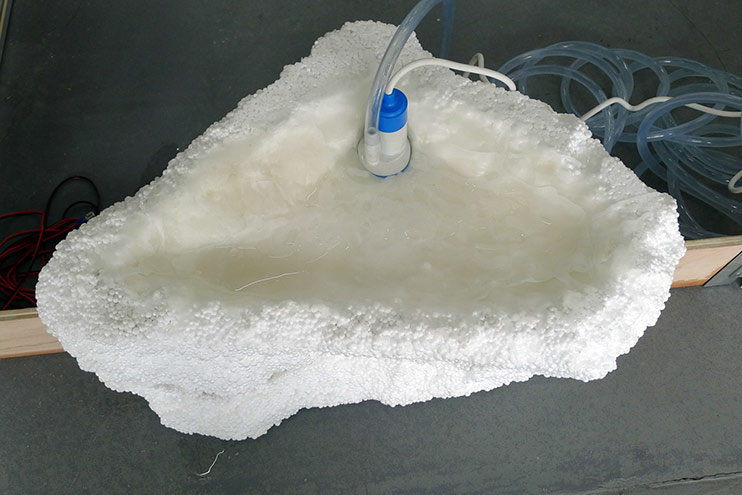
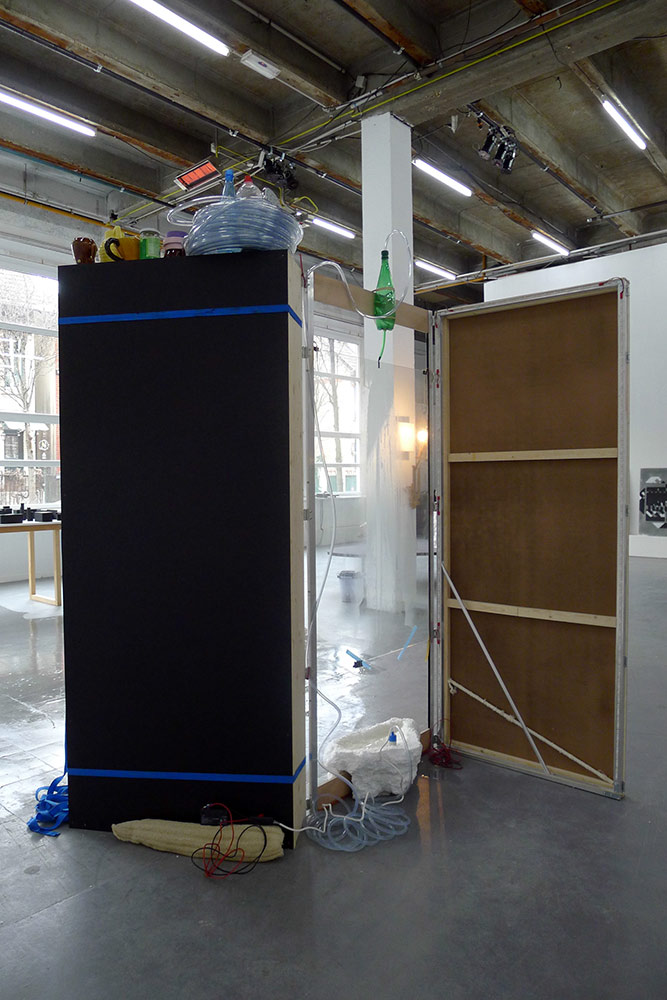
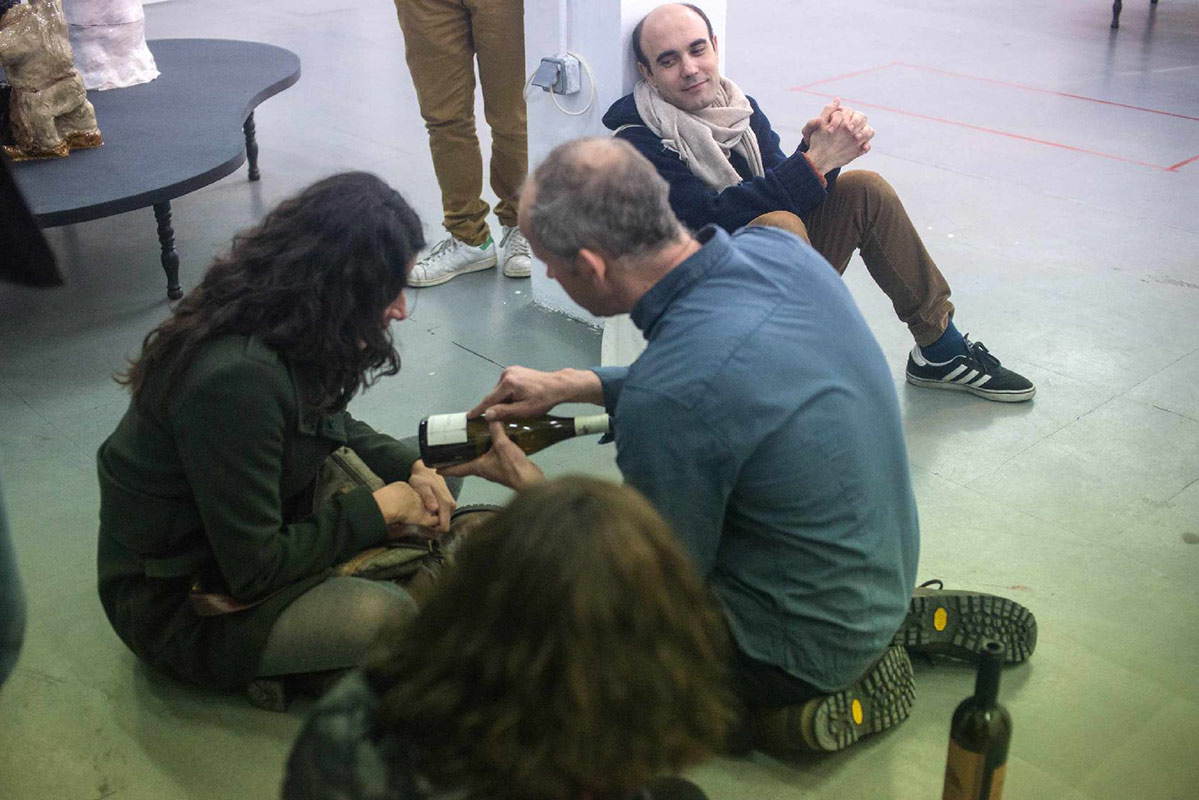
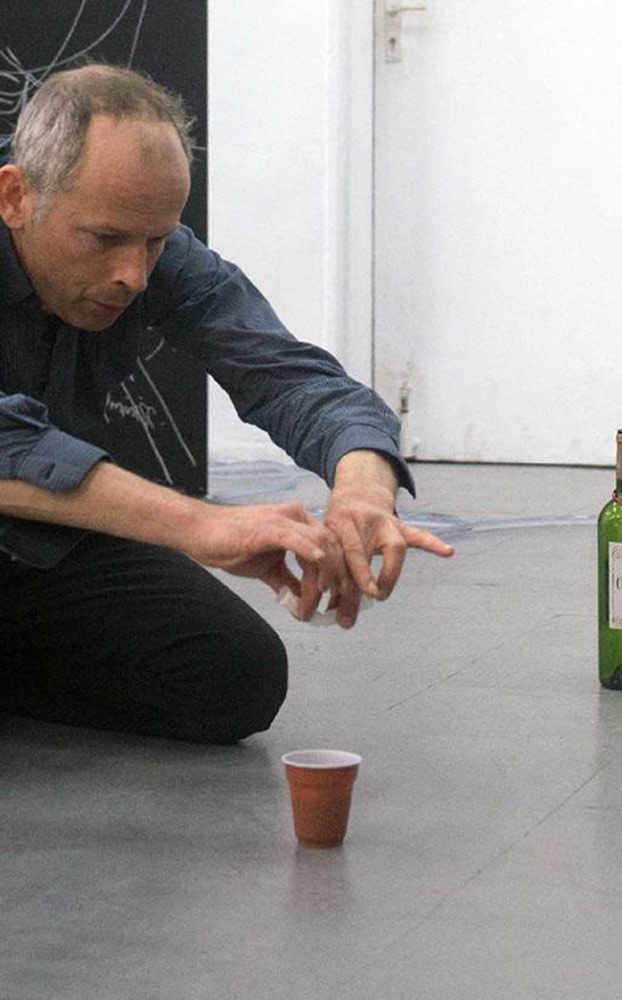

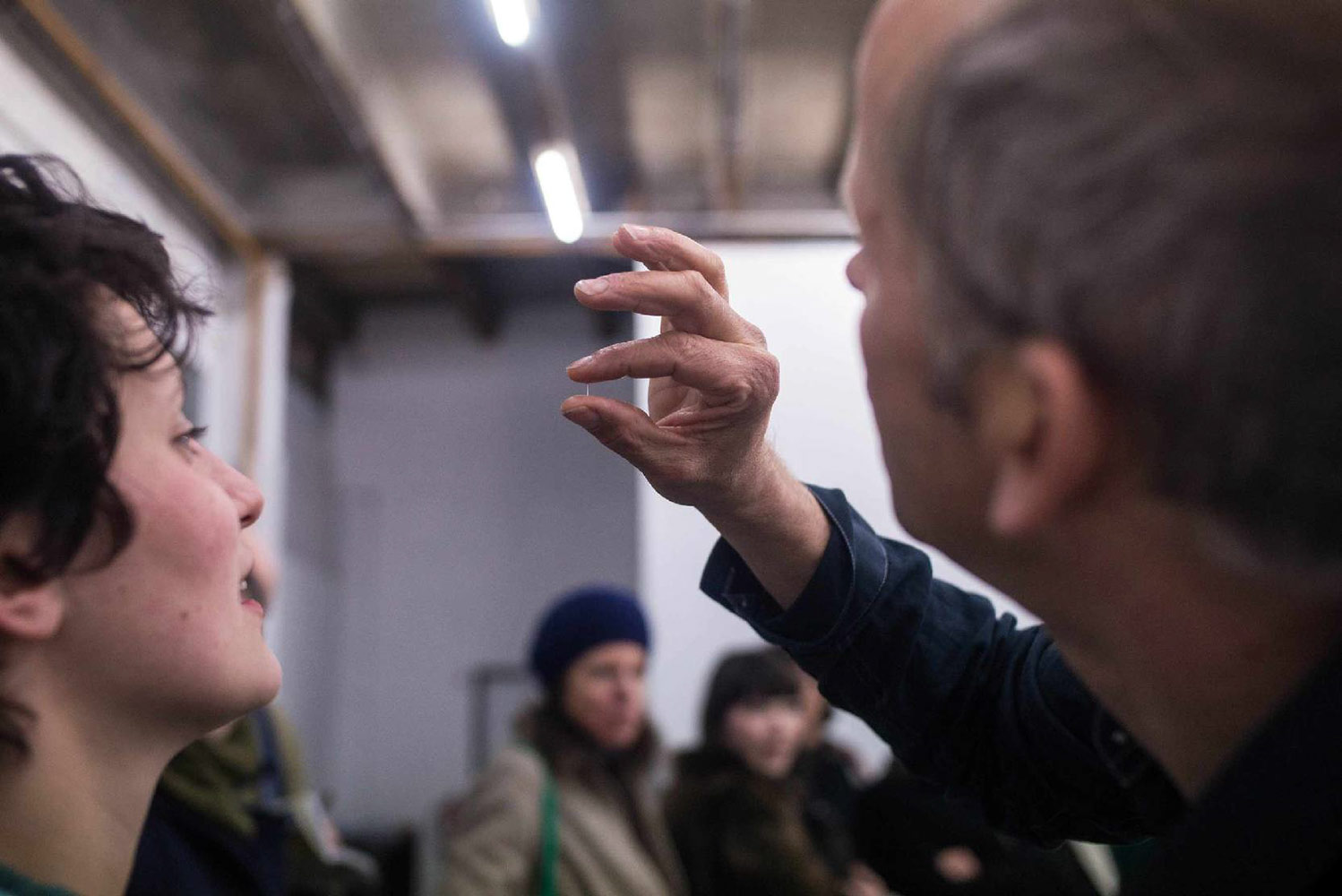
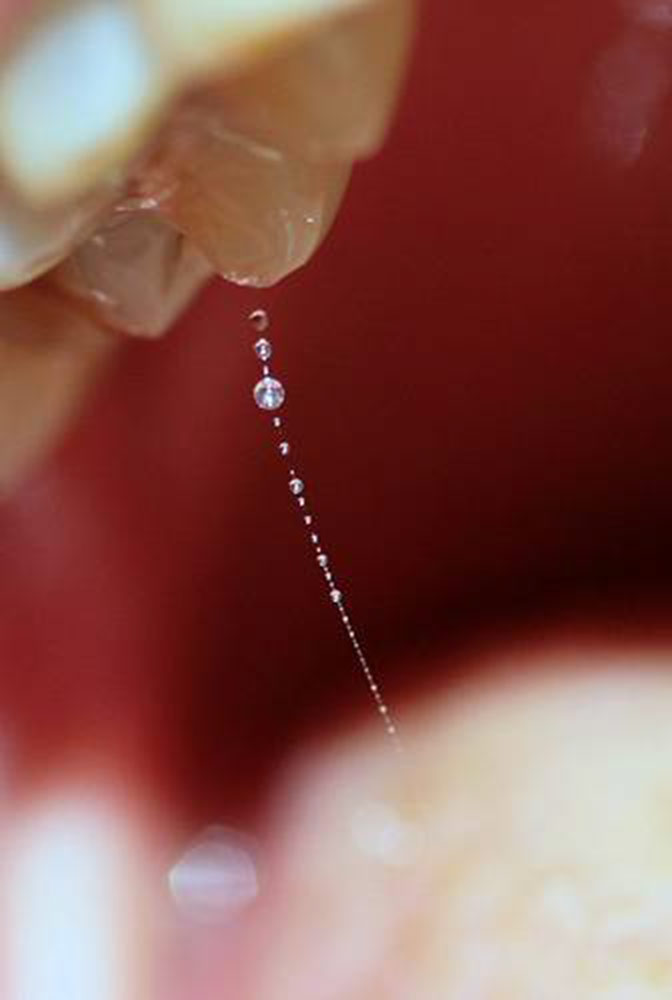
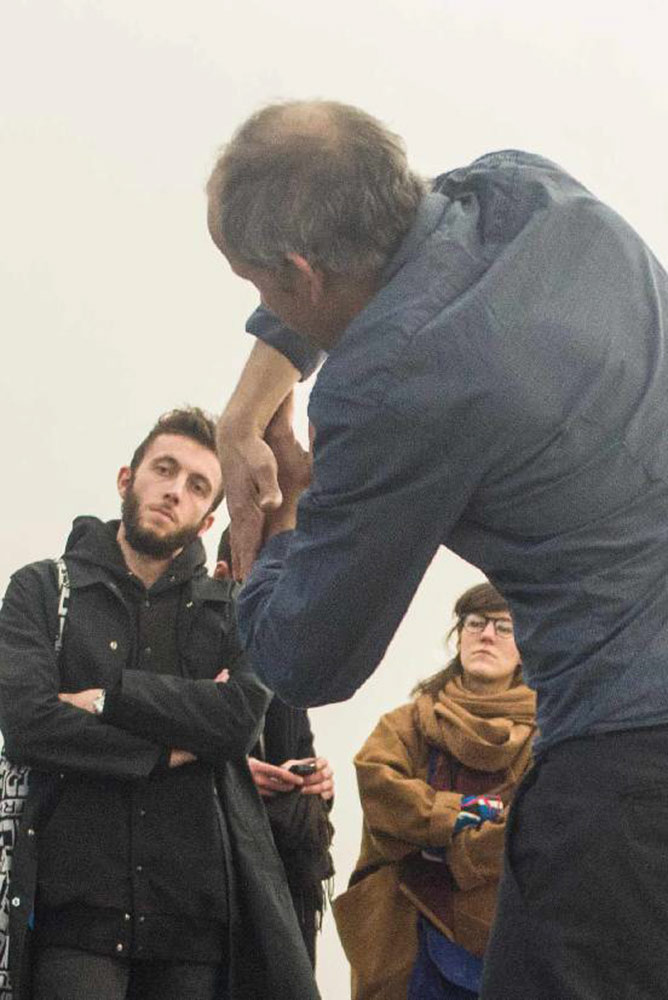
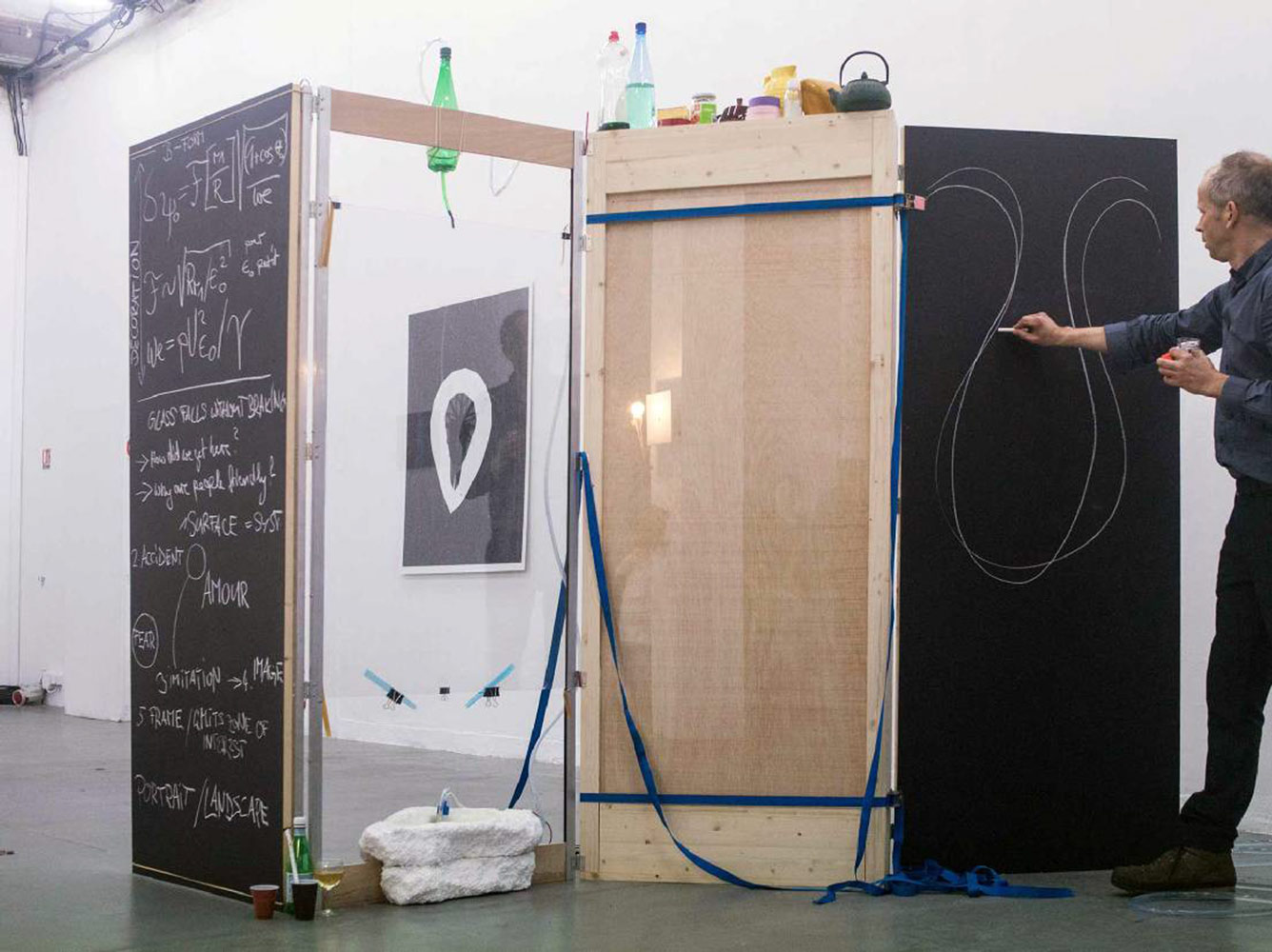
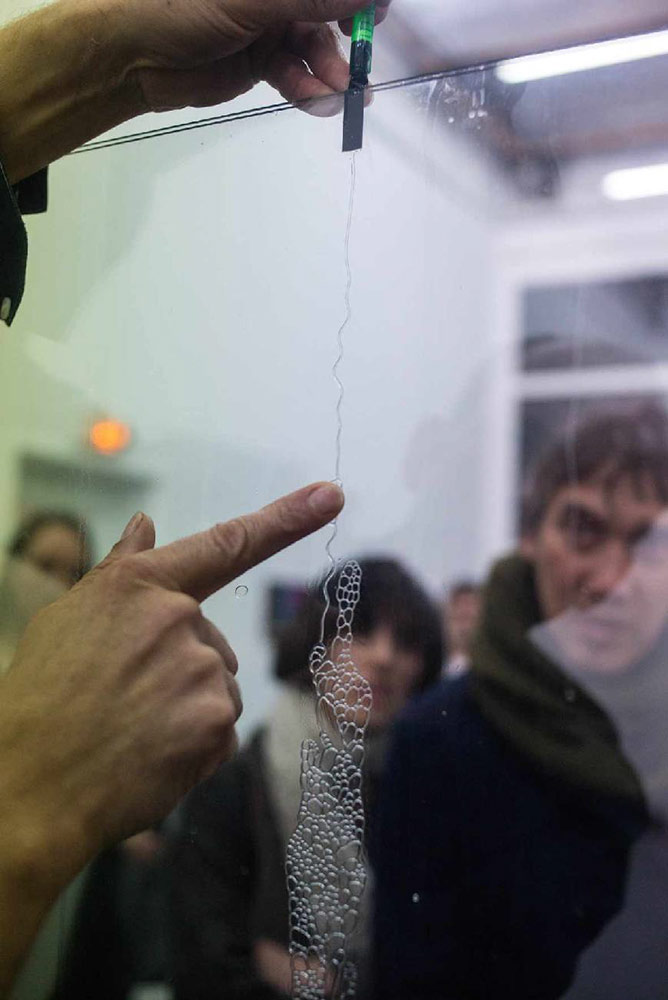
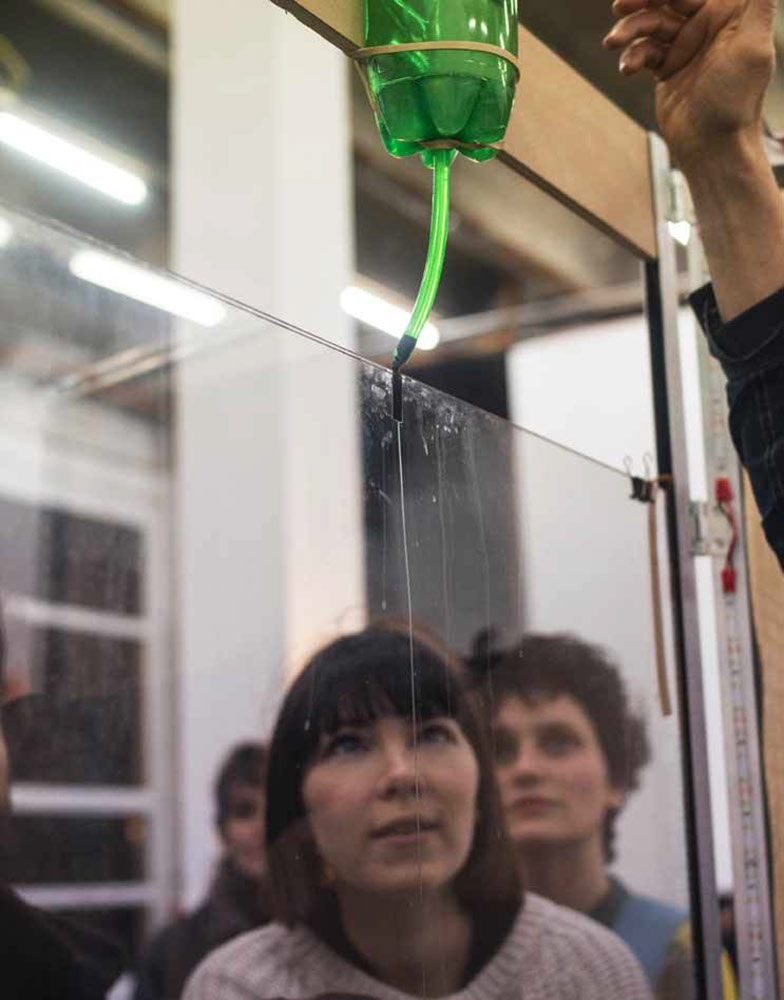
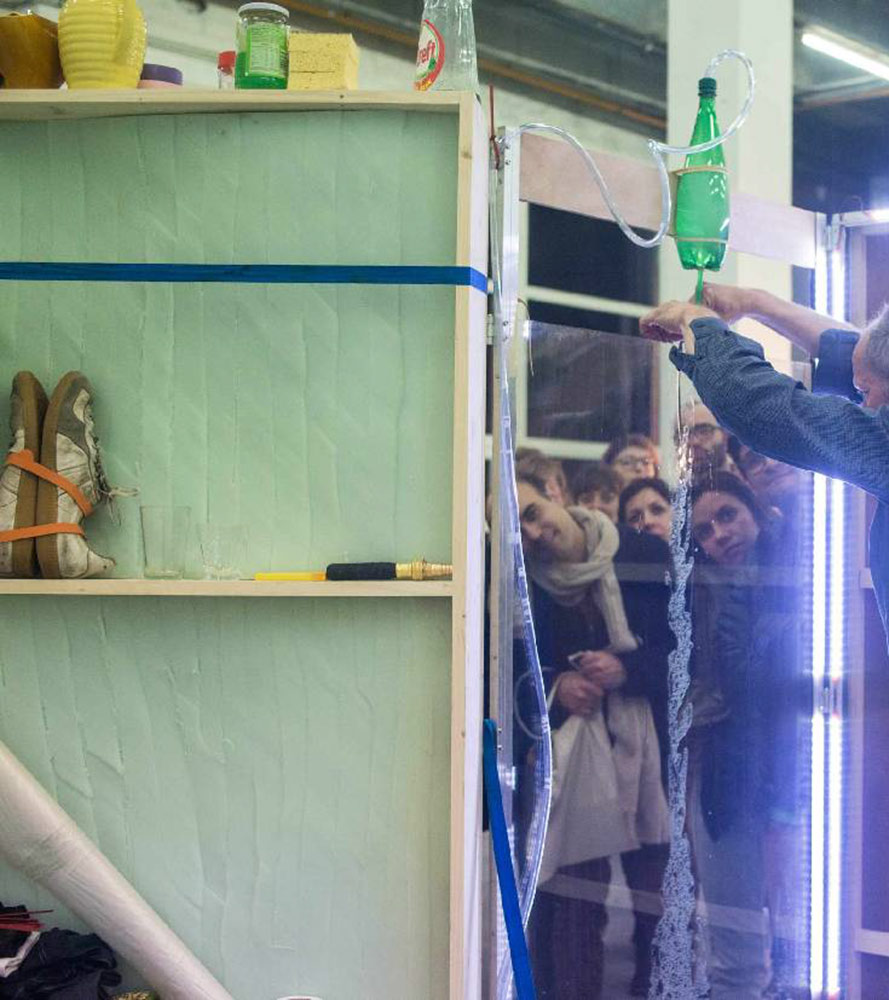
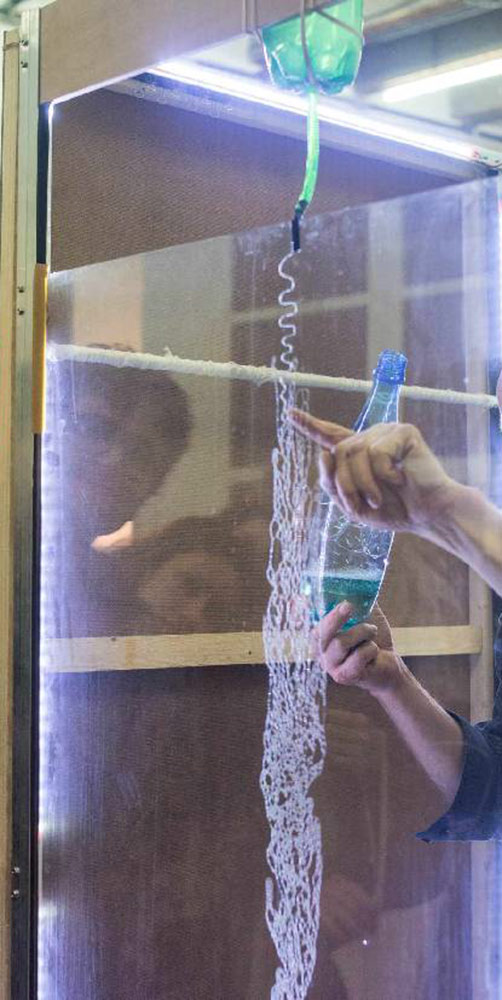
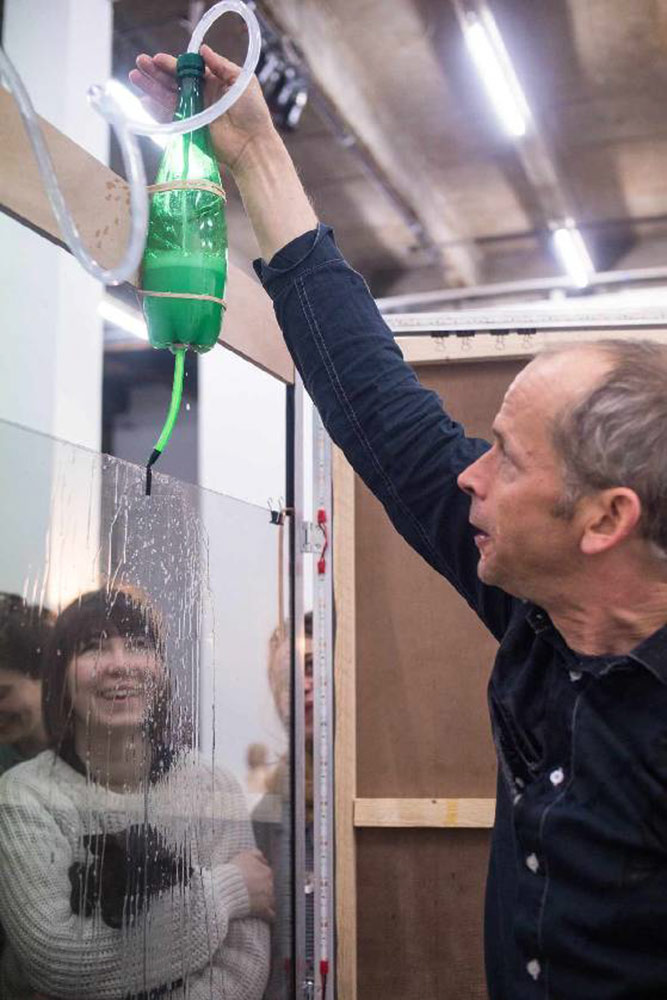
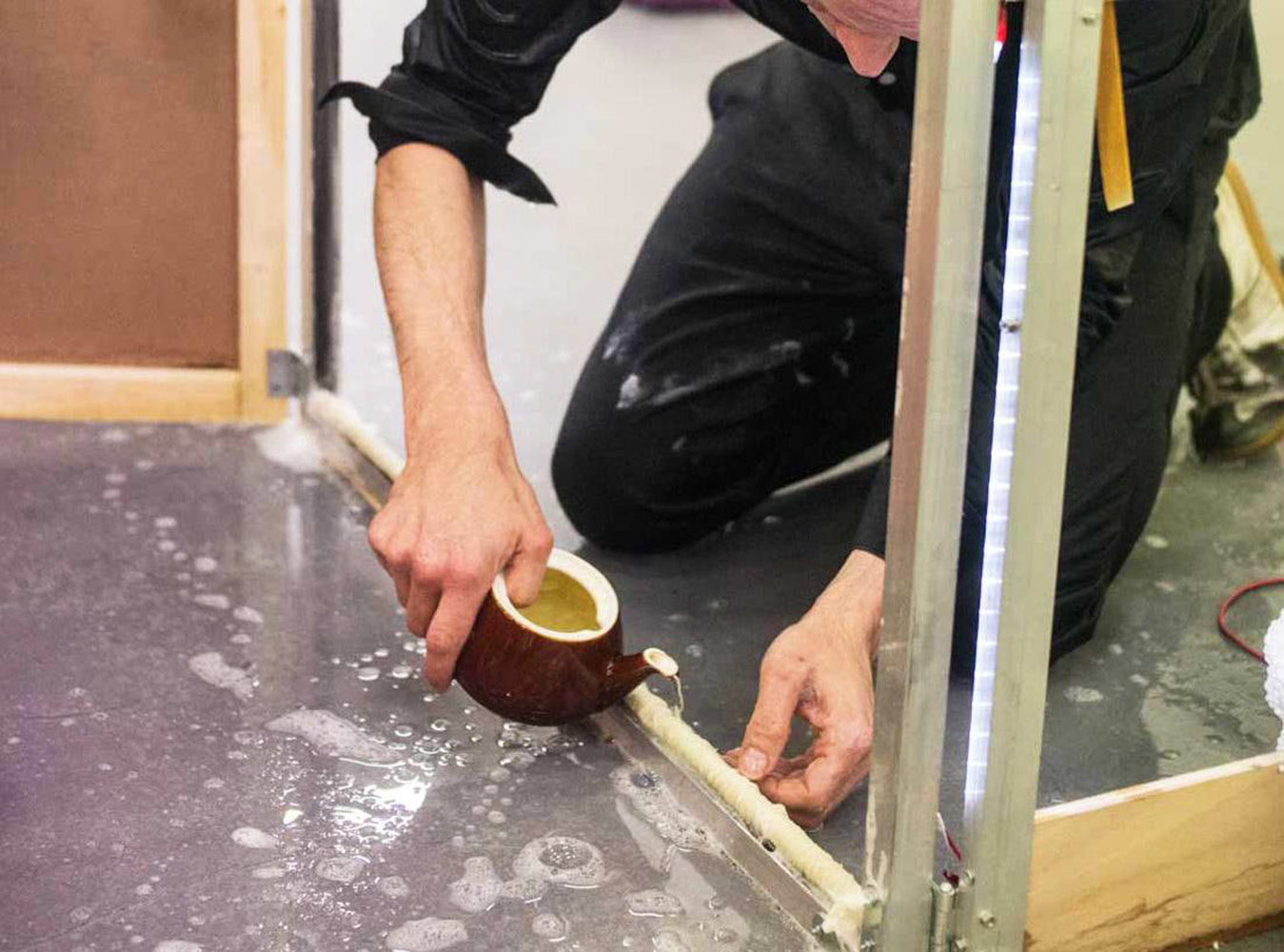

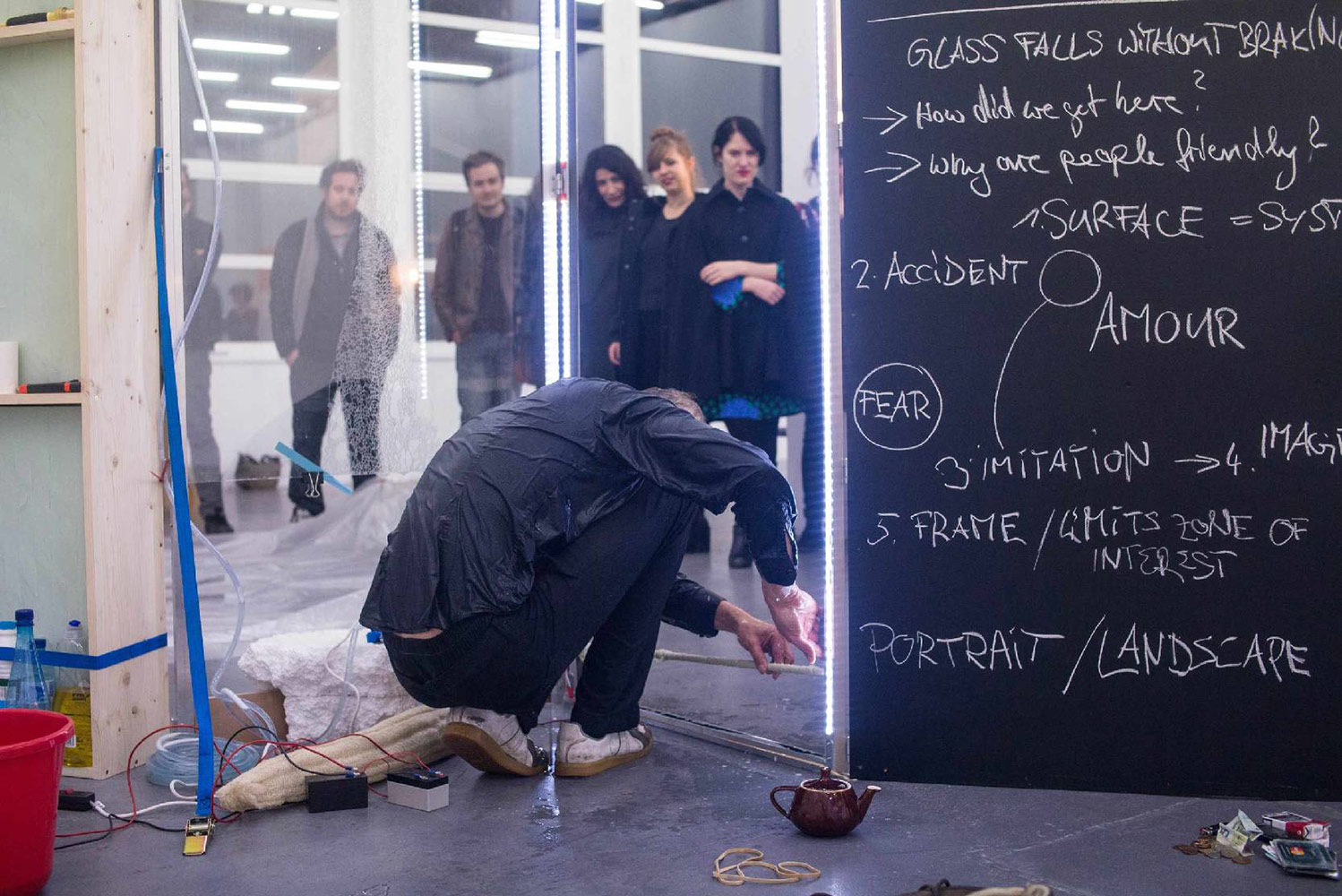
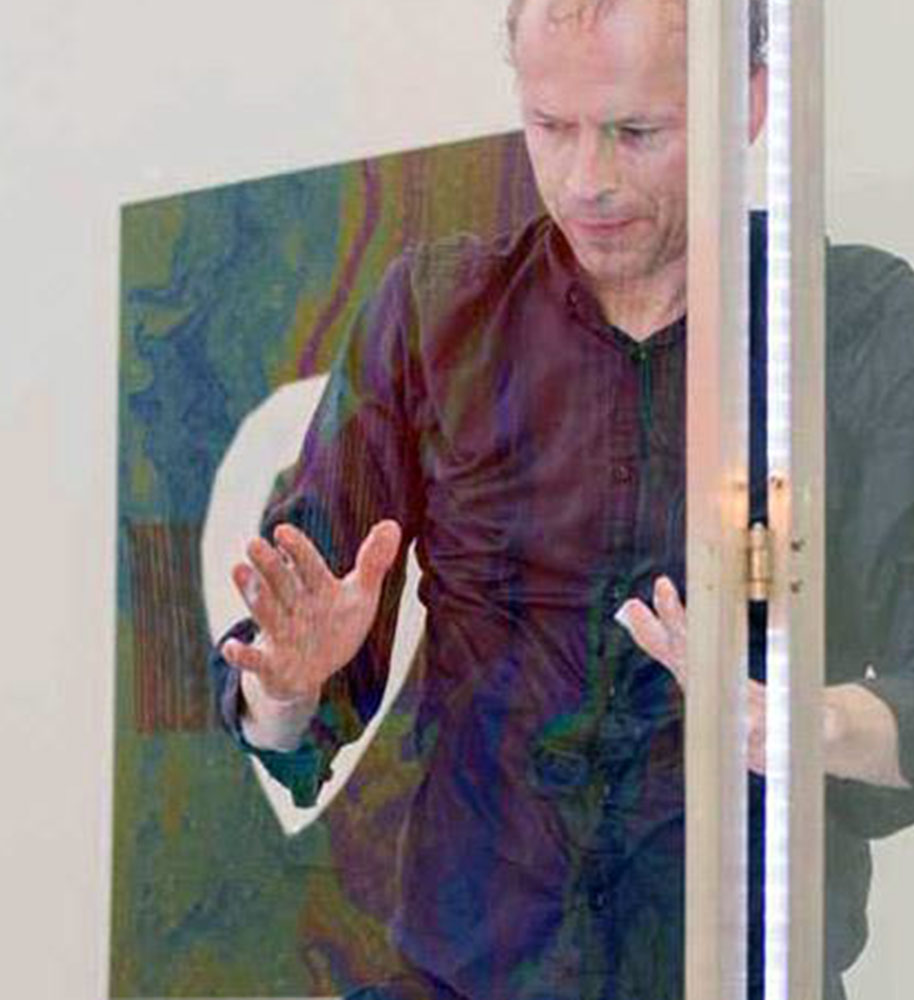
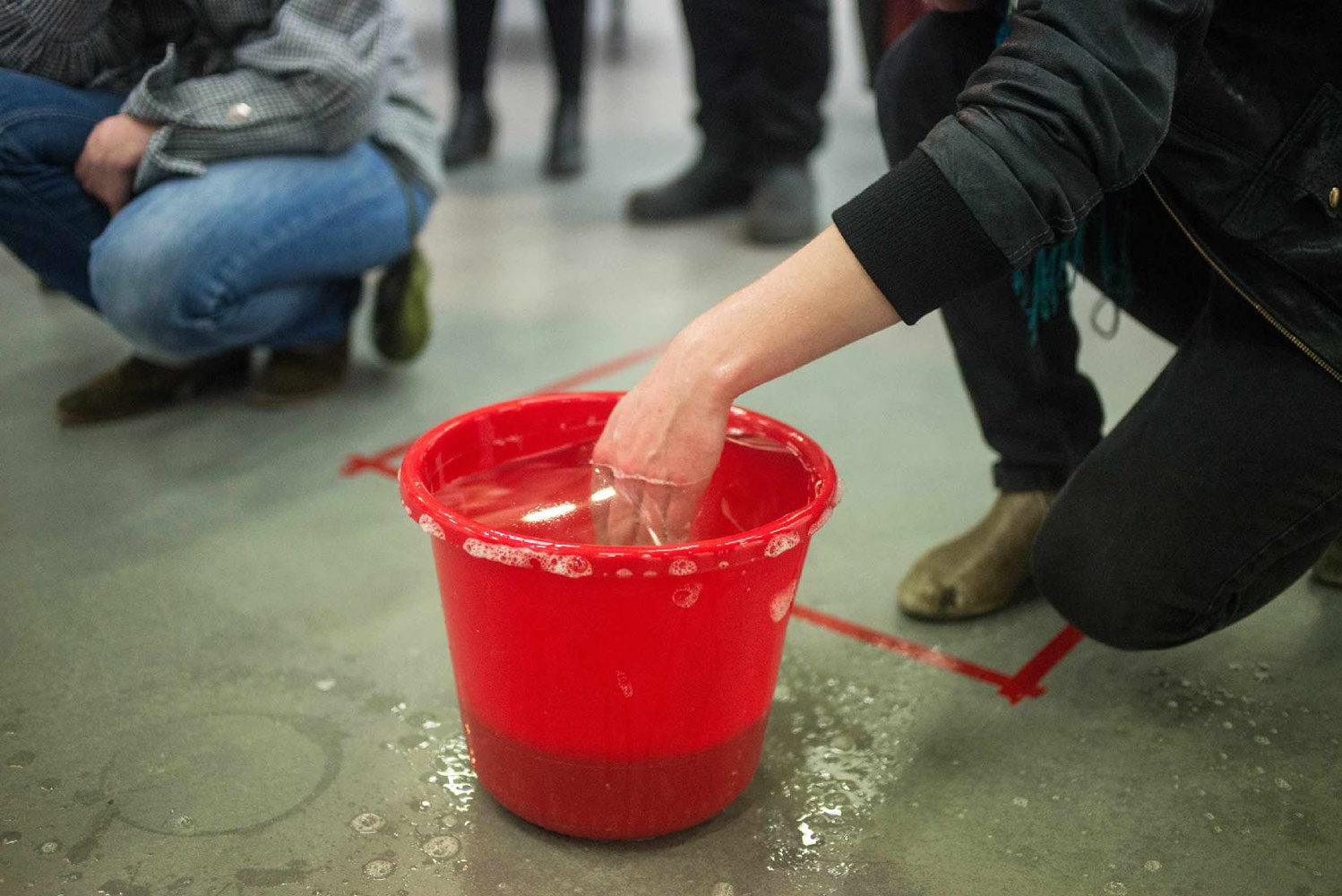
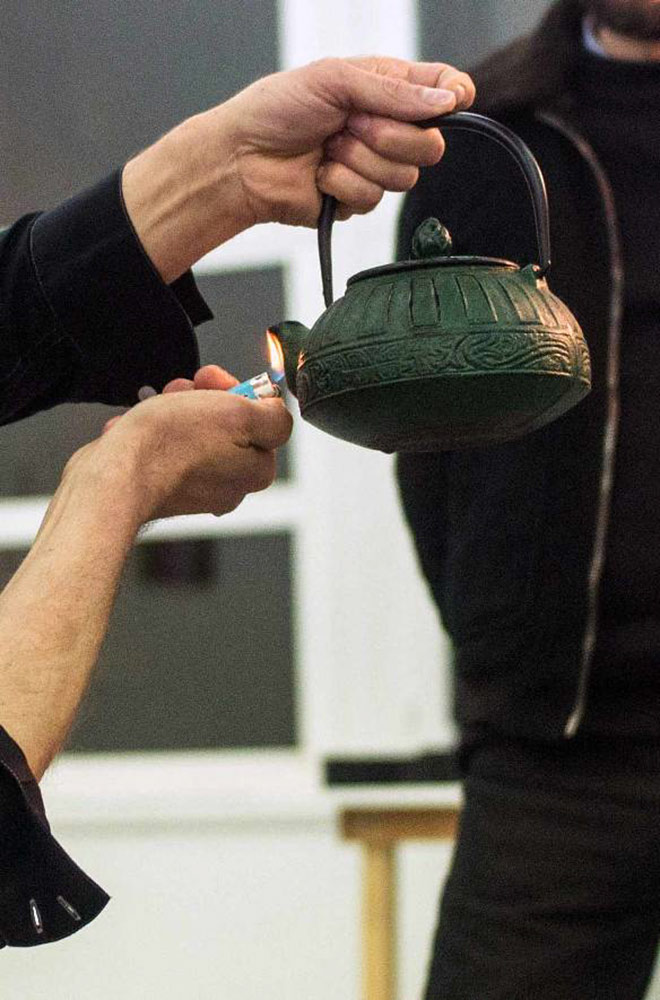
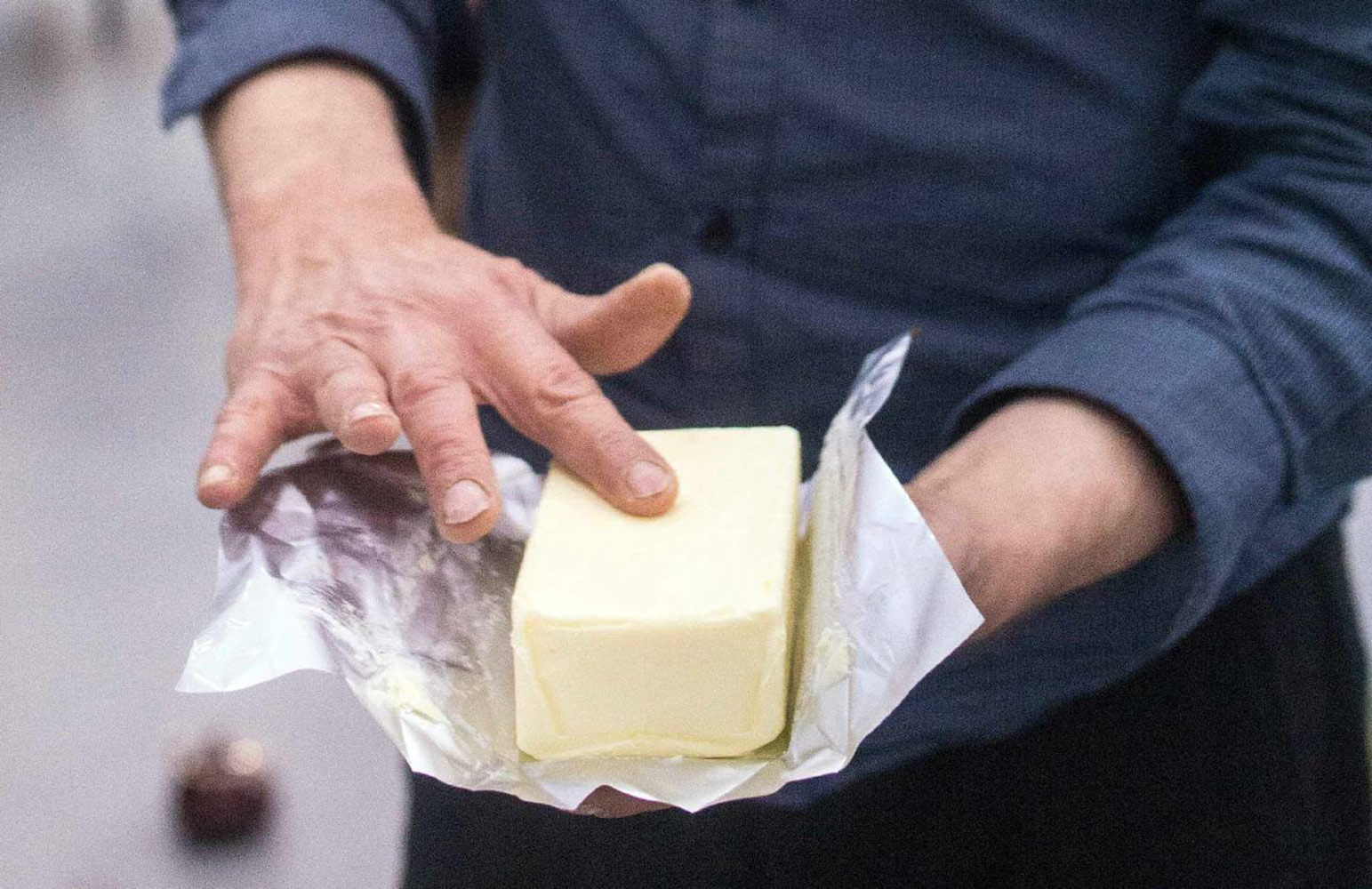
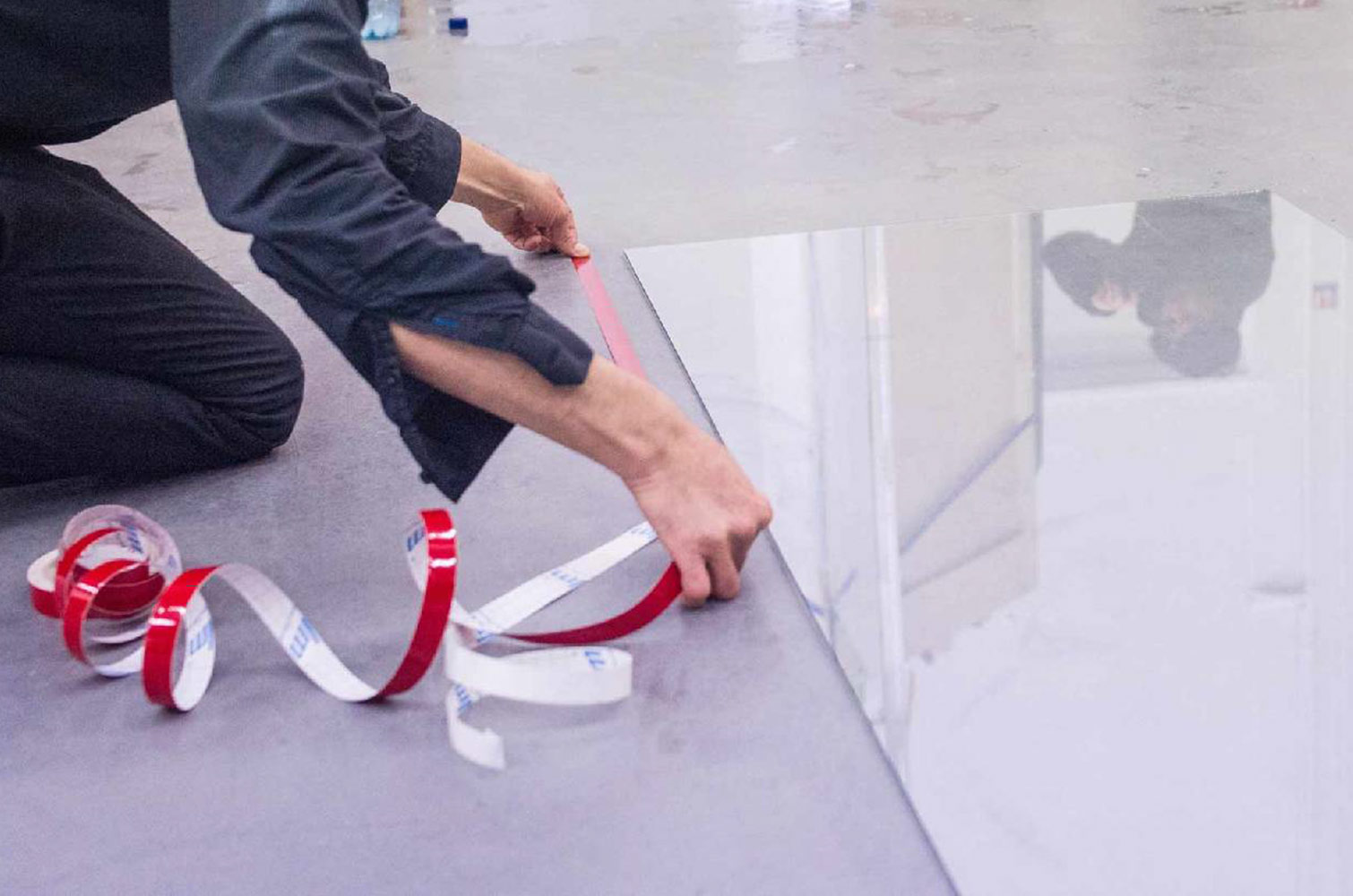

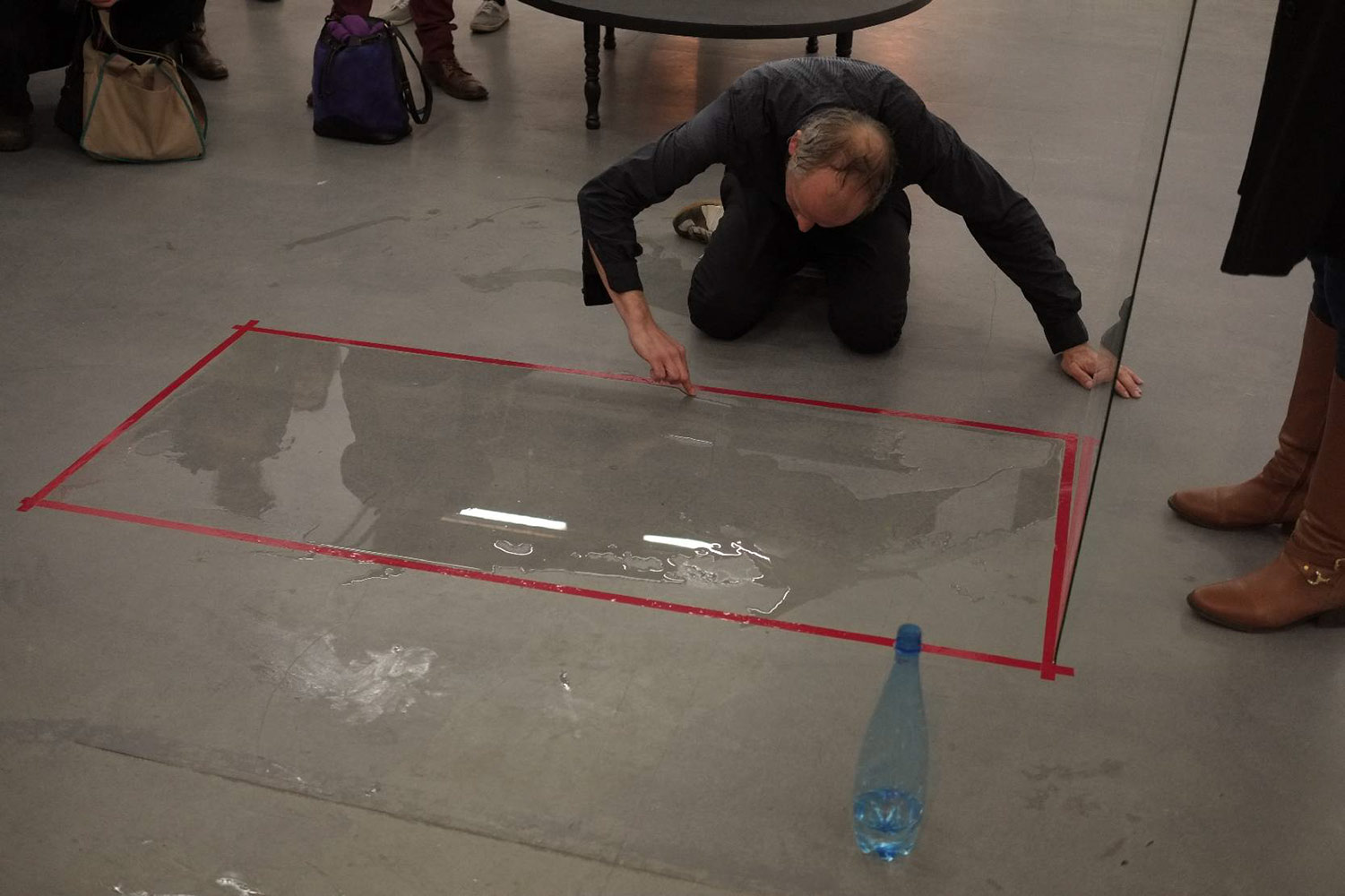
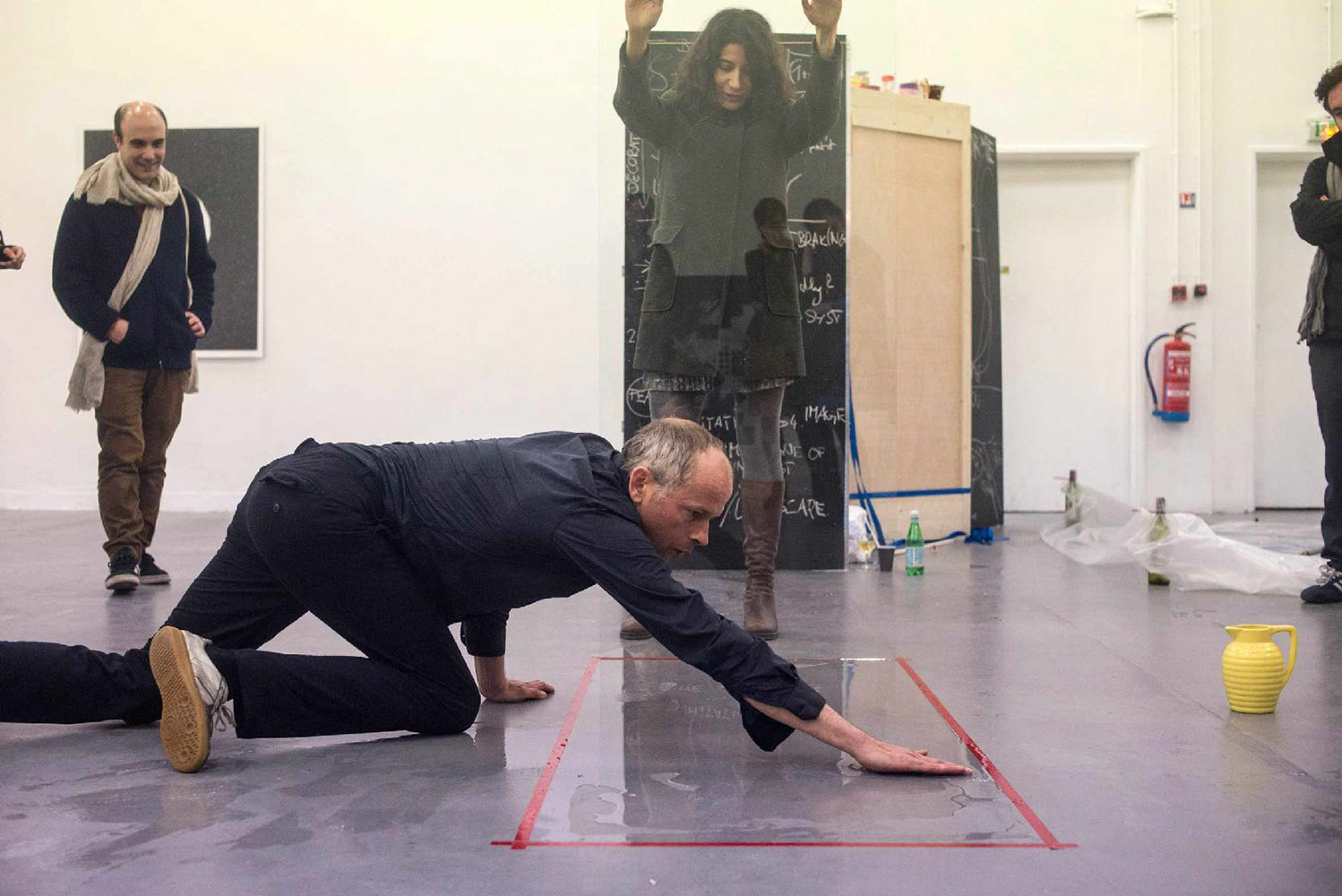
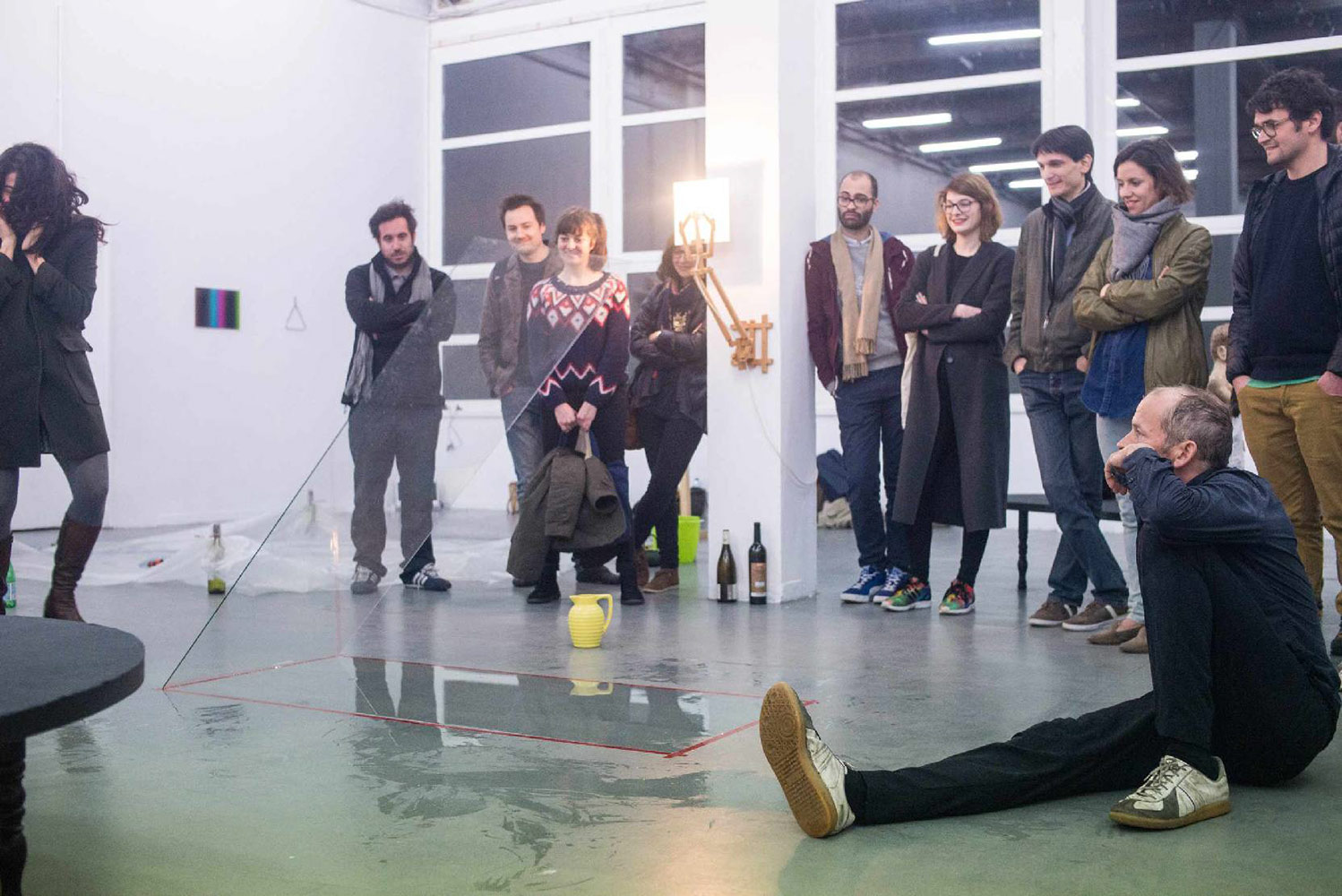

The teapot problem 1 – 3
three demonstrations at Mains d'oeuvres, St. Ouen, 2015
It starts with a stain. And it is one that you don't like. It appears, it grows and stays.
People probably drink tea since 2737 before our era. The first leaves that fell from a tree into the cup of hot water of a Chinese emperor
are so far away from us that they can hardly be called a distant memory. And yet, we still have not been able to create a teapot that doesn't drip. Almost 5000 years were not sufficient to make us find a form that permits pouring a liquid from one container into another without risking stains.
These three demonstrations about things that I do not understand are centred on surface tension.
The teapot problem is universal if we look at the forms we live with. The demonstration starts slowly, you look at a carafe, a bottle and a teapot that share the same problem.
I get some coffee, I put sugar in, I stop on the bag of sugar and the importance of forms : The inventor of the single - portion - sugar - bag had conceived this bag to be broken in the middle and
to be used as a dosing feeder, it was supposed to be torn open in the middle. The most usual gesture to open it is to tear off one of it's ends after having shaken it like a fan. This method used
millions of times per day is said to have made the inventor commit suicide.
It continues with theory, with me drawing and explaining the physical solution to the problem. There are inserts explaining a formula that was found in 2014 by a team of physicians in Lyon or we introduce another wonder : this saliva string between my hands that produces small saliva balls in regular distances. A chain, a necklace of saliva pearls.
It continues with a fountain, a small stream of soap-water becomes a meander between two sheets of glass instead of flowing down in a straight line. Soap produces this effect that mocks intuition. There could be a rather long description of this very known and yet indescribable phenomenon here and I would like to have things here that show how failing to show it is part of my way of showing things. The phenomenon is kind of well visible on the forth of the following five photos. It could be longer, but the horizontal amplitudes are good.
This demonstration or this fountain needs a considerable amount of preparation, you need the right quantities of soap and water, the space between the glasses has to correspond to the mixture and the flow-rate as well. I am almost never well enough prepared to not be able to fail it, it seems to be something that I do willingly, it seems as if being almost there is good enough.
The one that follows has never worked for me up to now : Walking through a soap film that remains intact after my passage. It has the same problems : I forget to prepare the good mixture a day ahead, I abandon the design of a system that adds soap-water from the sides of the frame too early and will try to compensate this during the presentation using more and more water to make up for a lack in my system.
I continue with the two solutions that solve the problem of the drip on the tablecloth but do so in avoiding a formal approach : British women used butter in the 1920ies and smeared a thin layer under the spout, French scientist in 2014 suggest another hyper-hydrophobic substance:grime. The pot will not drip any longer, but this far from having found a formal solution.
A text about love, fear and falling in love could accompany the next pictures. It would be called: similarity absorbs shocks.